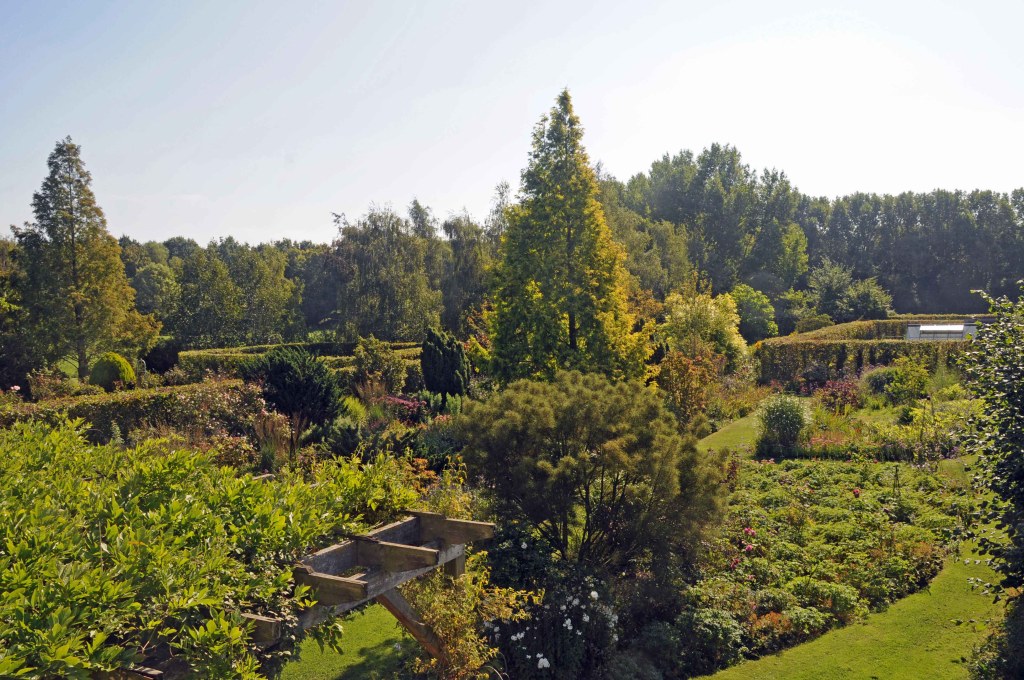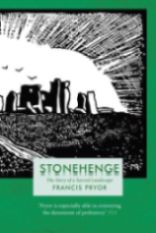The last few weeks have been a bit frantic. My new book, A Fenland Garden, was published on July 6th and on that evening I did a sell-out signing in Waterstones Bookshop, Kings Lynn. Since then, I’ve spent a week recording the Audiobook version, near Leicester, and have also done signings in St Neots, Ely and Bourne – all of which, I’m delighted to report, were sell-outs, too. Although the book is about a garden in the Fens, bookshops outside the area have also shown an interest and I’m planning to do signings in Cardiff (on September 26th) and Letchworth (on October 10th). I’ll be travelling to both events by rail, so I’m keeping my fingers crossed that there aren’t any more strikes. Gosh, we live in strange and slightly unpleasant times. Schools and hospitals are collapsing. Climate change is happening much faster than most of us expected and I find it hard to believe that some people still deny that it’s a largely man-made phenomenon. Ask any farmer or gardener and they’ll soon tell you how rapidly things are changing. This season has been incredibly hostile with a baking hot June and a wet, miserable July. You couldn’t pull weed seedlings out of the rock-hard soil in June. So they grew like rockets in July and are now seeding everywhere: as the old saying has it: one year’s seeding; seven years weeding. But enough of that: let’s be more positive.
Our potato crop was excellent, although the first earlies (Home Guard) were a bit damaged by slugs. The second earlies, which we’re now eating, are large and well-flavoured. We lifted all the spuds by the start of August, which has helped cut down on slug damage, but that wet July led to quite a lot of damage due to rot – not made any better by our heavy clay-silt soil. Still, the potatoes were large, and we’ve certainly managed to store a crop that will see us through the winter into the new season of 2024. The other varieties we’ve grown this year have been our two old favourites, Kestrel (second early) and Desirée (main crop). Thanks to Brexit, potato prices have gone crazy – so it makes plenty of sense to grow your own (and they taste far better than supermarket ones).
Right now, we’re both spending any spare moments out in the garden pulling up weeds and trimming shrubs. Wildlife seems to be going mad: there are hares everywhere and young ones (leverets) have managed to find a way through the wire fence into the vegetable garden where they have attacked anything not protected by mesh. I’ve had to plant the runner beans three times and at last they’re now in flower: better late than never. Having said that, we had a smashing crop of French beans, although the strawberries were largely pecked to bits. I’ve also just lifted the onions, garlic and shallots and I can’t recall a better crop: the onions feel very firm and should keep well. The shallots are larger than normal and also feel good and hard. But it’s that garlic that’s truly remarkable: VAST and very highly flavoured. They’re all drying in the barn, and I’ll clean them in a week or two’s time. There’s no rush, as wet or damp onions never store well over winter.
I mentioned that school and hospital buildings are collapsing and readers outside the UK may not be aware of the crisis which was brought about by the use of an aerated but low-cost reinforced concrete known as RAAC (reinforced aerated autoclaved concrete) which was used in the 1960s to ‘90s and which had a thirty-year lifespan. It’s a bit of a no-brainer: if you mix air with concrete and steel, oxidation takes place and the reinforcement rusts. Still it was cheap and available and, besides, five years is a long time in politics. But in our Fenland house and garden we have also been having a few practical problems, which we’ve had to sort out. First, the wooden decking beneath the pergola, or Poop Deck, at the back of the house has started to rot, after about twenty-five years of wisteria flowers and leaves falling from above. I knew we’d pay a price for those stunning blue flowers, but the replacement wasn’t too expensive (unlike RAAC!) and the new floor was very well (and swiftly) fitted. Here’s view of the wooden supporting sub-structure:
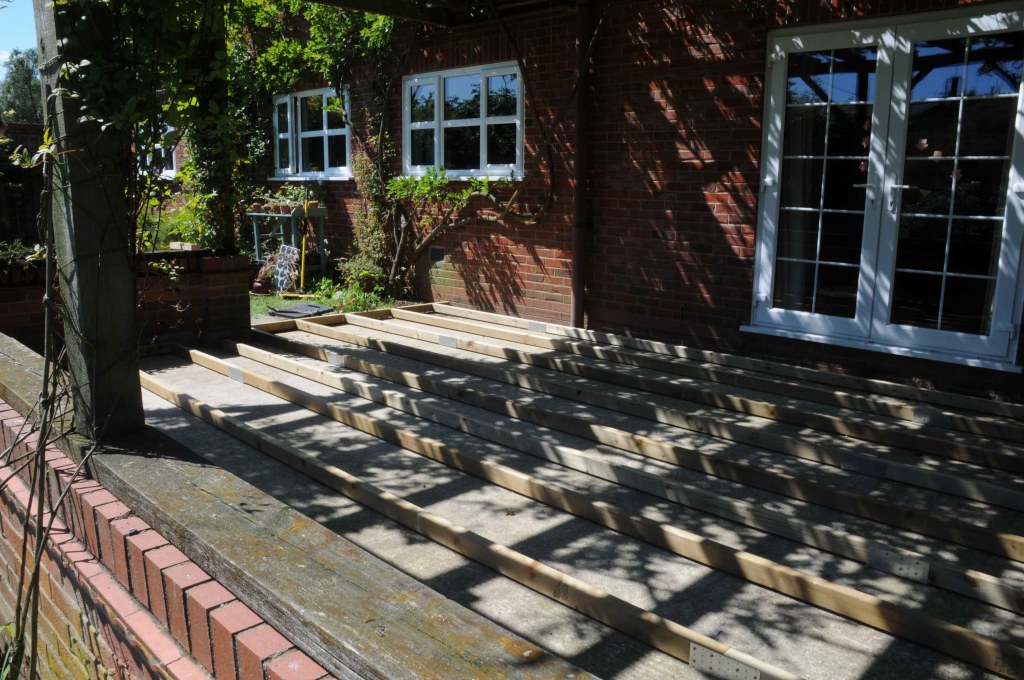
And this is what it looks like with the new decking installed. I’m sure our NGS visitors in September will appreciate it. This is where we sell our teas and cakes.
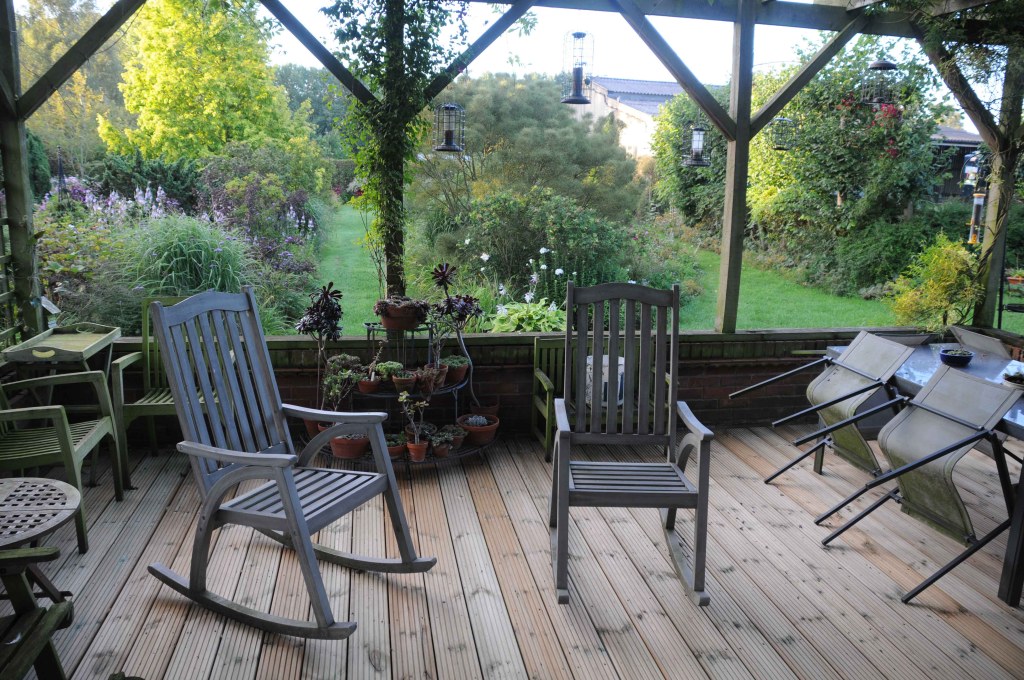
I suppose you could say that the damaged decking was our own fault, for planting a wisteria. But our other practical problem was caused by the clean rural air that encourages the growth of lichens, mosses, fungus and algae, which could clearly be seen coating the solar panels on the house roof. To our amazement they were cleaned from the ground, without any scaffolding or ladders, simply using a brush/scraper on the end of an incredibly long-handled tool-cum-hosepipe.

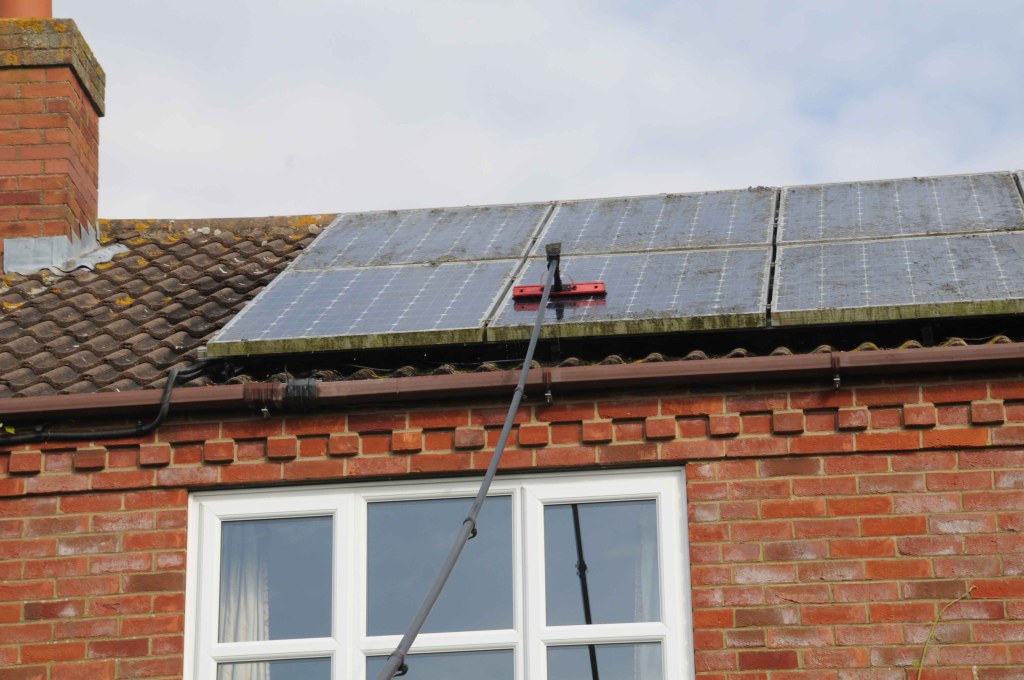
These non-gardening problems aside, we have been working around the clock trying to get the garden into shape, following a torrid June and watery July. In almost fifty years of active gardening I have never known such a difficult growing season when the ground has been either too dry or too wet to remove weeds. Right now, in early September, it’s baking hot again. And we’ve had a few surprises, too. A couple of days ago a very helpful neighbour, Jessie Githiri, who features in A Fenland Garden, was standing on the pond’s edge carefully removing those tall weeds, known as Willow Herb. He was working very carefully as he didn’t want the fluffy seeds to blow all over the garden. Then he noticed an enormous caterpillar low on a weed stalk. Maisie ran indoors for the moth book and identified Jessie’s find as the caterpillar of an Elephant Hawk Moth. These are far from common, especially in these insect-deprived times. A few minutes later we were again alerted to where Jessie was working. He carefully held up another weed, which we hurried across to examine. It was a large but different caterpillar, which the book revealed to be the ominously-sounding Death’s Head Hawk Moth – another very rare discovery. To find two Hawk Moths in less than half an hour is most remarkable and proves beyond doubt that our garden has become a sanctuary for wildlife.
We’re very much looking forward to welcoming visitors on our two National Gardens Scheme Open Days during the weekend of September 16th and 17th. Here’s our poster:

Admission is £6.00 for adults and children are free. There’s a large plant stall and tea/coffee is £1.50. Homemade cake is £2.00 a slice. I won’t be selling copies of A Fenland Garden, but I will be prepared to sign one if you ask me very, very nicely.
It has been an exceptionally difficult year and you must forgive the presence of a few weeds. Having said that, I don’t think the roses have ever flowered as well as they did back in June:

As I write, the temperature in the garden is 28 Celsius and the next two days are said to be getting even hotter. But despite the heat, I think I can say that the garden still looks splendid. This is a picture I took from upstairs an hour or so after breakfast. Fingers crossed, there’ll be a few more asters and roses out in a couple of weeks. I do hope you can come and pay us a visit. Every penny we raise will be going to mostly medical Charities. If ever there was a time when a turbulent world needed Charity, it is now.
